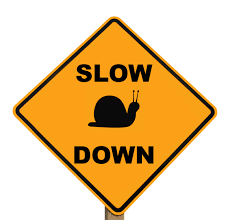Being a **10-second child in a 1-second world simply means that the child has a slower processing speed. The concept implies an expectations mismatch between the adult speaker and the child. Our cultural assumption is that children are supposed to “process” information immediately and respond accordingly. But the 10 second child needs way more time! This idea can be applied to all differently-wired brains. If you’ve read the other Post Perm Newsletters, you are well aware that your adopted child most likely experienced trauma that changed their brain. These changes include processing speed. Keep reading to learn how your child may actually be one of those 10-second children in a 1-second world.
 10 SECONDS
10 SECONDS
Next time someone asks you a question, count slowly till 10 in your head before you answer. Look at their face and you will see frustration. Ten seconds. Our fast paced world isn’t designed for those 1o seconds. Waiting that long for a response is not accepted or tolerated. Allowing at least 10 seconds for a response as a parent is tough. Our world is fast. Our communication pace is fast. But what if your child needs that time in order to function? What if we allowed that 10 seconds in our communications with our children?
Is This My Child?
Does your child ignore you when you call their name? Do you find yourself repeating things to your child again and again? Is "I don't know" your kid's go to phrase? Do you find that your child seems to make things up when you ask questions? Is your kid shutting down more and more when faced with challenging tasks?
 If you answered yes to any of these questions, your child may need more time to process information, demands, and all forms of communication. The way you can know if this is your kid is to start giving them more time. Sometimes 10 seconds is not nearly enough time. Try 5 minutes. See if your child will answer when you call their name if you wait. See if you can stop repeating yourself. See if the “I don’t knows” suddenly decrease. See if your child starts managing challenges better just by slowing your pace, your words, your expectations.
If you answered yes to any of these questions, your child may need more time to process information, demands, and all forms of communication. The way you can know if this is your kid is to start giving them more time. Sometimes 10 seconds is not nearly enough time. Try 5 minutes. See if your child will answer when you call their name if you wait. See if you can stop repeating yourself. See if the “I don’t knows” suddenly decrease. See if your child starts managing challenges better just by slowing your pace, your words, your expectations.
My Story
I have a 30-year-old son who has a differently-wired brain and complex Special Needs. It took me 25 years to slow my pace down. Twenty-five years to allow him the time he needs to keep up with my fast paced world of words and expectations. Twenty-five years to finally slow down enough to learn a lesson he was here to teach me: that moving at a slower pace is not a bad thing. It actually allows you to notice and feel and breathe. His behavioral team taught me that his slower processing speed had nothing to do with his intelligence. That not understanding his need for extra time in responding had created damaging trauma from being rushed when he lived away from us. Rushing is avoided now at all costs as it triggers him. That now with some decisions, he needs several days to process and make an informed choice. That he deserves that time. That to honor my wonderful son, I must shed my hurried ways and just count and wait. That there is a hidden beauty in slowing down. Won’t you join me?
**The 10-second child in a 1-second world concept was coined by a well renowned Fetal Alcohol Spectrum Disorders researcher and author named Diana Malbin.**





